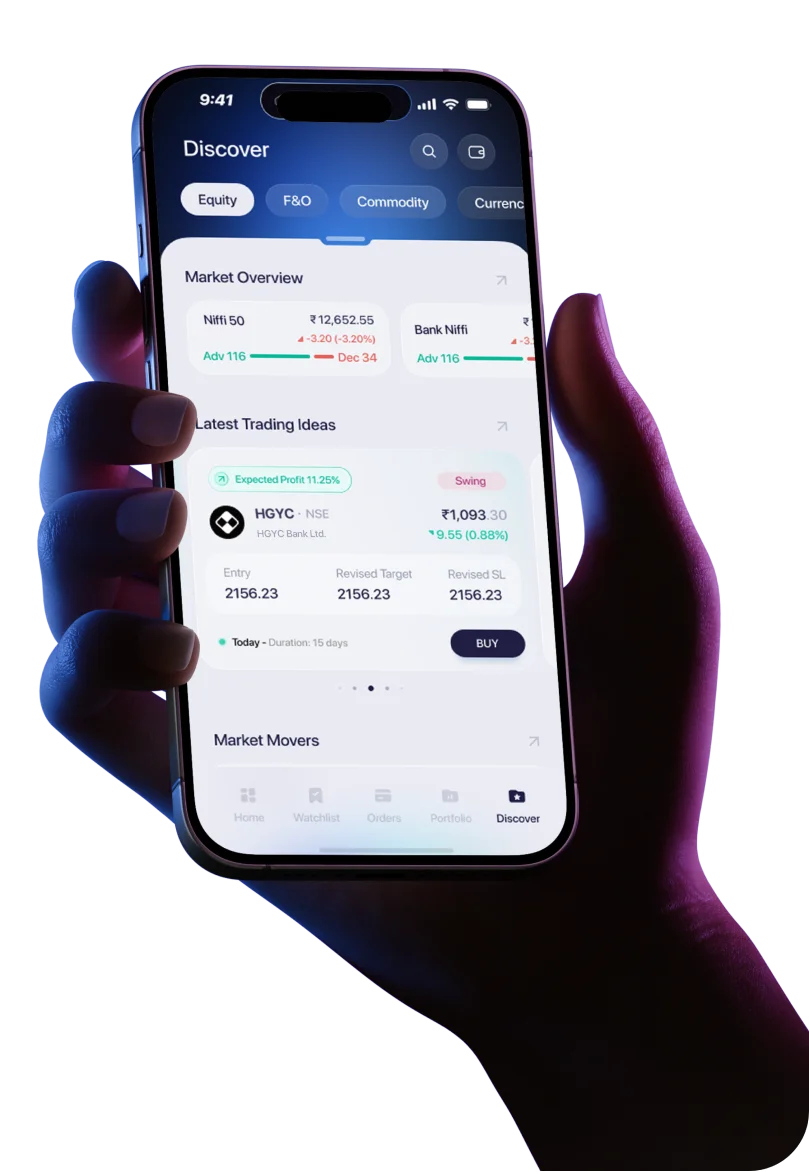In this article, we will discuss
- What is a Stop-Loss?
- Why is a Stop-Loss Important in Intraday Trading?
- Calculating the Stop-Loss in Intraday Trading
- What is the Target Price?
- Calculating the Target Price in Intraday Trading
- Conclusion
Intraday trading can be a lucrative avenue for traders who want to capitalise on quick, short-term price movements in the market. However, like any high-reward proposition, intraday trading can also be highly risky if you do not have adequate protective measures in place. This is why in addition to studying the price action of a security, it is crucial to set the right stop-loss and target price limits for any trade you initiate.
In this article, we take a closer look at the meaning of stop-loss and target price limits, why they are each important in intraday trading and how you can calculate them for your regular trades.
What is a Stop-Loss?
A stop-loss is a target price limit that you set before placing an order. If the price of a stock or security hits this level, the order is automatically squared off (meaning you exit the position). True to its name, a stop-loss order in intraday trading is necessary to stop or limit the loss from a trade. It helps cut the downside risk in case of adverse price movements.
For example, say you take a long position in a stock that is currently trading at Rs. 120 in the market and buy 100 shares of the company. You expect that the price will likely go up during the intraday trading session. However, you are also unsure about this and want to account for any unfavourable price movements. So, you can set a stop loss at Rs. 110.
This means that if the price of the stock falls to Rs. 110, your shares will immediately be sold in the open market, thus limiting your losses to a maximum of Rs. 10 per share (i.e. Rs. 120 minus Rs. 110). Your total loss, in this case, will be capped at Rs. 1,000 (for 100 shares).
Why is a Stop-Loss Important in Intraday Trading?
A stop-loss limit is crucial in intraday trading because of various reasons. Firstly, the price action in intraday trading can be quite volatile, so if you are not careful, you may end up with more losses than you can handle. Additionally, since you will have to square off your position by the end of the trading session, it is vital to have a cap on the loss you can endure during the day.
Calculating the Stop-Loss in Intraday Trading
You can use any one of three effective techniques to calculate the stop-loss in intraday trading. The choice of method depends on the data available to you. You can even use a combination of the methods for more effective risk management. Check out these three alternatives below.
Using Percentages
This is perhaps the easiest and most common way to calculate the stop-loss in intraday trading. Here, you set the stop-loss at a specified percentage of the stock price. So, irrespective of the market volatility and the current price of the stock, your stop-loss will be easy to calculate.
For example, say you are willing to lose up to 4% of a stock’s price. If the stock is trading at Rs. 100 when you buy it, you can set the stop-loss at 4% below this price, which is Rs. 96. If the price hits this point, your holdings will automatically be sold.
Using Moving Averages
You can also use the Simple Moving Average (SMA) or the Exponential Moving Average (EMA) to figure out where to set the stop-loss for your intraday trade. Typically, for intraday trading, it is advisable to use short-term moving averages like 10-day or 20-day MA.
If the stock’s price is currently above the MA, it indicates an upward trend. So, you may want to take a long position in the stock. Here, the stop-loss in intraday trading should be just below the chosen MA. If the price dips below this moving average, it may be suggestive of a trend reversal where the price may continue to fall. Your stop-loss can help prevent further losses in this case.
Similarly, if the stock’s price is currently below the MA, it indicates a downward trend. So, you may want to take a short position in the stock. The stop-loss in that case should be just above the chosen moving average.
Using the Support or Resistance Level
This method is similar to the one using moving averages. Here, you identify the support level for a stock you want to buy (or the resistance level for a stock you want to short). Thereafter, you set the stop-loss slightly below the support level price for long positions and slightly above the resistance level price for short positions.
What is the Target Price?
The target price is the expected best-case scenario for the price action of a stock or security. In other words, it is the price limit that represents the best outcome possible — at which you decide to cap your profits and exit your trade.
In intraday trading, the target price helps you identify whether you need to hold on to a trade in anticipation of a further price increase (in the case of long positions) or decrease (in the case of a short position).
Calculating the Target Price in Intraday Trading
To calculate the target price for intraday trading, you can study price action charts and technical indicators like Fibonacci extensions. Some other common methods to set a realistic target price include the following:
Support and Resistance Levels
You can use the support and resistance levels to set the target price. For long positions, the ideal target price may be just below the resistance level, so you can sell the stock before its price potentially reverses. Similarly, for a short position in intraday trading, the ideal target price may be just above the support level.
Risk-Reward Ratio
You can set the target price based on the risk-reward ratio you are comfortable with. For instance, say you prefer a risk-reward ratio of 1:3. This means you are comfortable with taking 1 unit of risk for every 3 units of potential rewards. So, if you set the stop-loss for a trade at Rs. 2 below your entry price, your reward or target price should be 3x this price, which is Rs. 6 above your entry price.
Conclusion
With the Samco trading app, you get instant access to the various analytical tools needed to determine the stop-loss and target price levels. If you do not have an account on the Samco trading app, all you need to do is open a demat account and trading account with Samco. Then, simply log into the Samco trading app to make informed trades with adequate stop-loss limits and accurate target prices.
Disclaimer: INVESTMENT IN SECURITIES MARKET ARE SUBJECT TO MARKET RISKS, READ ALL THE RELATED DOCUMENTS CAREFULLY BEFORE INVESTING. The asset classes and securities quoted in the film are exemplary and are not recommendatory. SAMCO Securities Limited (Formerly known as Samruddhi Stock Brokers Limited): BSE: 935 | NSE: 12135 | MSEI- 31600 | SEBI Reg. No.: INZ000002535 | AMFI Reg. No. 120121 | Depository Participant: CDSL: IN-DP-CDSL-443-2008 CIN No.: U67120MH2004PLC146183 | SAMCO Commodities Limited (Formerly known as Samruddhi Tradecom India Limited) | MCX- 55190 | SEBI Reg. No.: INZ000013932 Registered Address: Samco Securities Limited, 1004 - A, 10th Floor, Naman Midtown - A Wing, Senapati Bapat Marg, Prabhadevi, Mumbai - 400 013, Maharashtra, India. For any complaints Email - grievances@samco.in Research Analysts -SEBI Reg.No.-INHO0O0005847




 Easy & quick
Easy & quick
Leave A Comment?